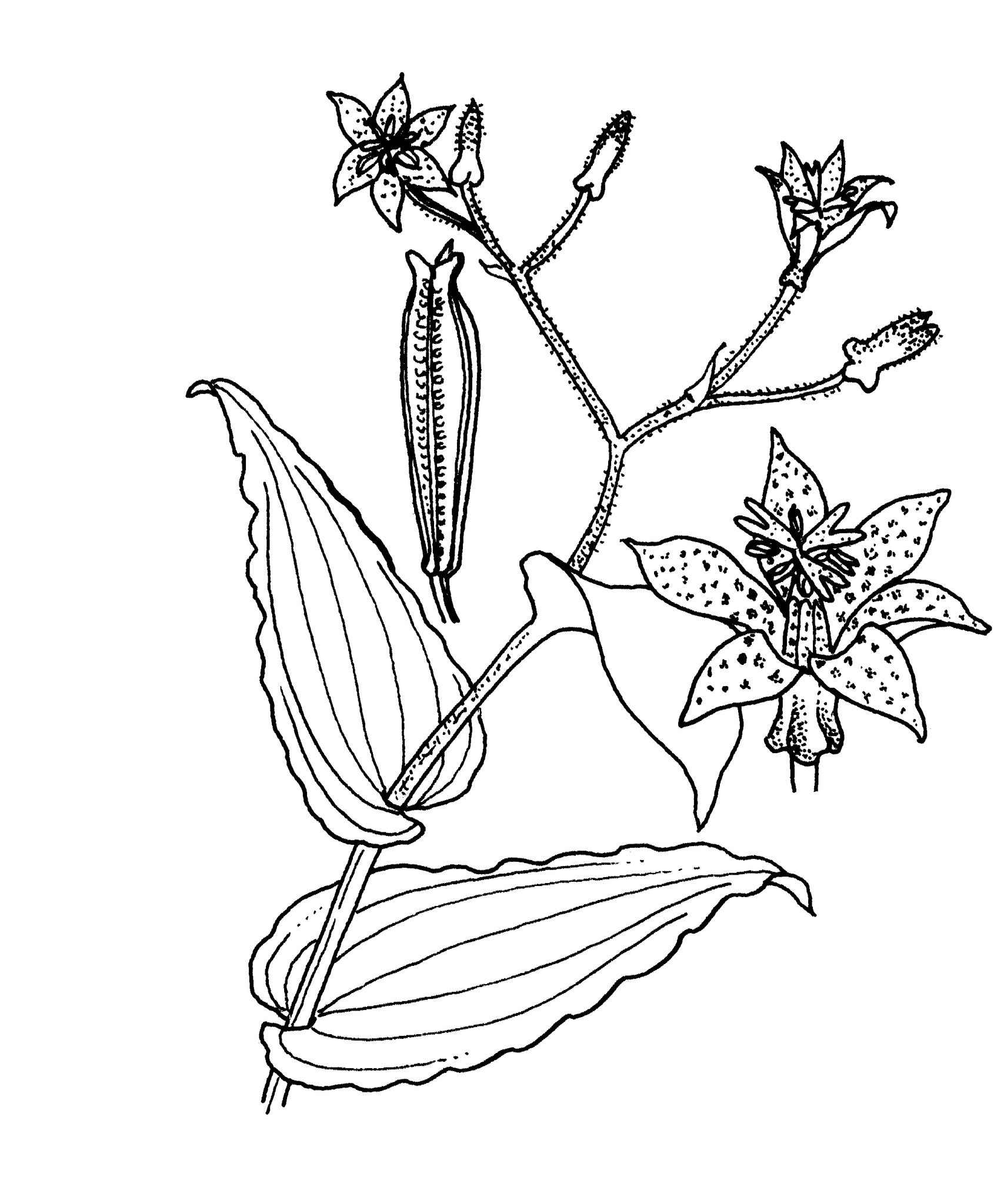
Greek tri – three, kyrtos – convex or bulging, referring to the prominent tepal nectaries.
Perennial rhizomatous herbs with few-branched aerial stems. Leaves several to many, cauline, lanceshaped to ovate, not sheathing. Flowers radially symmetrical, funnel- or bell-shaped, erect or spreading. Inflorescence a few- to many-flowered terminal or axillary cyme or panicle. Tepals 3+3, free, outer 3 with nectary spurs. Stamens 6, free; anthers outward facing. Ovary superior, ovoid. Fruit a capsule. Seeds few, brown.
Grown in moist shade for the attractive foliage, spreading habit and unusual flowers.
16 species from the Himalayas to Japan and the Philippines.
Rhizomes; branched stems with cauline leaves; cymes or panicles of spotted flowers with nectary pouches.
Mathew (1985).
Source: (2005). Liliaceae. In: . Horticultural Flora of South-eastern Australia. Volume 5. Flowering plants. Monocotyledons. The identification of garden and cultivated plants. University of New South Wales Press.
